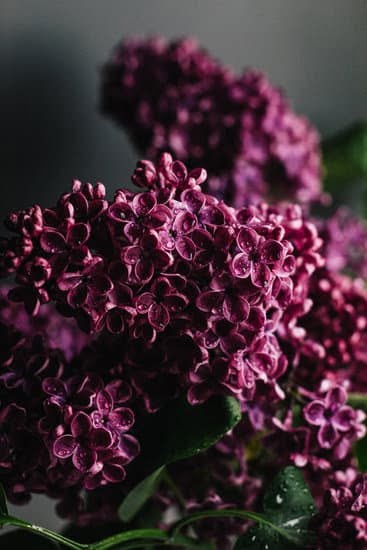Are you looking for ideas for small rectangular gardens? Whether you have a tiny backyard or a narrow strip of green space, there are plenty of creative ways to make the most out of limited dimensions. In this article, we will explore various tips and techniques for maximizing the potential of small rectangular gardens, from vertical gardening solutions to creative plant selection and design tips.
When it comes to small rectangular gardens, it’s essential to make the most out of every inch of space. From utilizing walls and fences for vertical gardening to choosing the perfect flora for small spaces, there are numerous strategies that can help transform a confined area into a lush and inviting outdoor retreat.
By incorporating functional features such as seating, paths, and eco-friendly additions, you can create a charming and practical garden oasis that reflects your personal style and preferences.
In addition to discussing design tips and features, we will also provide valuable insights on maintenance and care. Keeping your small garden in prime condition doesn’t have to be daunting – with the right approach and techniques, you can ensure that your green space remains vibrant and flourishing. Join us as we delve into the world of small rectangular gardens and discover the endless possibilities for revamping even the tiniest outdoor areas.
Assessing the Space
When it comes to small rectangular gardens, the key to making the most of your limited space lies in assessing the area and maximizing its potential. One of the first steps in this process is to take accurate measurements of your garden plot, including the length, width, and any obstructions such as trees or structures. By understanding the dimensions of your space, you can better plan and utilize every inch effectively.
After taking measurements, consider the layout and features of your small rectangular garden. Are there any existing elements that can be repurposed or incorporated into your design? For example, a tree can serve as a focal point for a seating area, while a fence can provide vertical gardening opportunities. Assessing these existing features will help you make the most of your available space.
In addition to evaluating the physical aspects of your garden, it’s essential to consider environmental factors such as sunlight exposure and soil quality. These factors will influence plant selection and placement within your small rectangular garden. By thoroughly assessing these elements, you can tailor your garden design to thrive within its unique limitations while embracing its full potential.
Vertical Gardening Solutions
When it comes to making the most of a small rectangular garden, vertical gardening solutions can be a game-changer. By utilizing walls and fences, you can maximize the potential of limited space and create a lush, green oasis without sacrificing precious ground area. There are countless creative ways to incorporate vertical gardening into your small rectangular garden, from simple hanging planters to intricate trellises and living walls.
One popular option for vertical gardening in small gardens is installing wall-mounted planters. These stylish containers can be attached to exterior walls or fences, allowing you to grow a variety of flowers, herbs, or even vegetables in a space-saving manner. Additionally, trellises and arbors provide support for climbing plants such as beans, peas, or ivy, adding height and visual interest to your garden while freeing up ground space for other features.
In addition to practical benefits such as maximizing space and improving air circulation around plants, vertical gardening also presents an opportunity for stunning visual displays in your small rectangular garden. When selecting plants for vertical arrangements, consider factors such as sunlight exposure, moisture levels, and mature size to ensure that your chosen flora thrives in its elevated environment.
By carefully curating a mix of vining plants, trailing foliage, and upright specimens, you can create a dynamic and vibrant vertical garden that complements the overall design of your small rectangular garden.
Plant Selection
When it comes to small rectangular gardens, the selection of plants is crucial in ensuring the space looks attractive and remains functional. With limited space, it’s important to choose flora that not only fits well within the area but also complements each other in terms of aesthetics and maintenance. Here are some plant selection ideas for small rectangular gardens:
- Choose compact varieties: Opt for plants that have a smaller growth habit, such as dwarf shrubs or bushes. These take up less space and are easier to maintain in a confined area.
- Consider vertical plants: Selecting climbing or trailing plants can help maximize vertical space and create a lush, green backdrop for your garden. Some options include ivy, jasmine, or climbing roses.
- Include versatile plants: Look for flora that serves multiple purposes, such as herbs that can be used for cooking as well as adding fragrance and color to your garden. Lavender, thyme, and basil are great examples.
In addition to choosing the right types of plants, it’s also important to consider their care requirements and how they will coexist within the small space. Be mindful of sunlight and water needs, as well as any potential conflicts between different species. By carefully selecting and arranging your flora, you can create a beautiful and harmonious small rectangular garden that brings joy throughout the year.
Creative Container Gardening
When working with a small rectangular garden, one of the most effective ways to maximize space is by utilizing creative container gardening ideas. This allows you to make the most of limited ground and also adds versatility to your garden design. Here are some creative container gardening ideas for small rectangular gardens:
- Vertical planters: Utilize vertical space by installing hanging or wall-mounted planters. These can be used to grow herbs, flowers, or even small vegetables while saving precious ground space.
- Suspended pots: Hang pots from an overhead structure such as a pergola or trellis. This not only adds visual interest but also frees up floor space for other features in your garden.
- Stacked planters: Stackable planters are a great solution for growing multiple plants in a compact area. You can stack them vertically or arrange them in tiers, creating a beautiful and efficient display of flora.
In addition to these container gardening ideas, it’s important to consider the types of plants that will thrive in small containers and limited space. Look for compact varieties of flowers, herbs, and vegetables that are well-suited for container growth. Consider the sunlight requirements and ensure that your chosen plants will receive adequate light in their designated containers.
Lastly, when incorporating container gardening into your small rectangular garden design, consider the overall aesthetics and cohesion of the containers with the rest of your outdoor space. Choose containers that complement your existing decor and design theme to create a cohesive and visually appealing garden area. By implementing these creative container gardening ideas, you can make the most of limited ground while enhancing the beauty and functionality of your small rectangular garden.
Design Tips for Small Rectangular Gardens
When working with small rectangular gardens, it’s important to use design techniques that create the illusion of space. One effective way to achieve this is by using diagonal lines in the layout of your garden.
By placing pathways, flower beds, and other features on a diagonal axis, you can make the space feel larger and more dynamic. Additionally, using curves instead of straight lines can soften the edges of a small space and give it a more organic and spacious feel.
Another important aspect of creating the illusion of space in a small rectangular garden is to carefully choose the colors of your plants and hardscape materials. Lighter colors tend to make a space feel larger and more open, so consider using pale pavers for your patio or paths, and selecting plants with light-colored foliage or flowers.
It’s also essential to carefully consider scale when choosing features for your small rectangular garden. This means selecting furniture, planters, and decorative elements that are appropriately sized for the space. Avoiding oversized or bulky items will help prevent the garden from feeling cramped or cluttered.
| Design Technique | Effect |
|---|---|
| Diagonal Lines | Makes the space feel larger and more dynamic |
| Light Colors | Makes the space feel larger and more open |
| Scale Consideration | Prevents the garden from feeling cramped or cluttered |
By implementing these design tips for small rectangular gardens, you can transform even the most limited outdoor spaces into beautiful and inviting retreats. Remember to think creatively and consider all aspects of your garden’s design in order to maximize its potential. With careful planning and attention to detail, you can create a small rectangular garden that feels spacious, functional, and aesthetically pleasing.
Functional Features
When it comes to small rectangular gardens, every inch of space counts. In this section, we will look at how to incorporate functional features such as seating, paths, and eco-friendly additions to make the most of your limited space.
Seating Options
One way to maximize the functionality of a small rectangular garden is by incorporating seating options. Consider built-in benches along the perimeter or a compact bistro set that can provide a place for relaxation and enjoyment of your outdoor space without taking up too much room. Additionally, you can also use multi-functional furniture pieces such as a storage bench that can hold gardening tools or cushions when not in use.
Pathways
Paths are an important element in any garden, providing both practical and aesthetic benefits. In a small rectangular garden, pathways can create the illusion of space by leading the eye around the garden. Opt for narrow paths made from materials like gravel or stepping stones to avoid overwhelming the limited space. Curved pathways can also add visual interest and make the garden feel larger than it is.
Eco-Friendly Additions
For those looking to make their small rectangular garden more sustainable, consider incorporating eco-friendly additions such as a rainwater collection system or a compost bin. These functional features not only help reduce your environmental impact but also contribute to the overall health and vitality of your garden. Additionally, adding elements like bird feeders, insect hotels, and native plantings can attract wildlife and promote biodiversity in your small garden.
By carefully integrating seating options, pathways, and eco-friendly additions into your small rectangular garden design, you can create a functional and inviting outdoor space that makes the most of every inch.
Maintenance and Care
Frequent Watering and Pruning
One of the most important aspects of maintaining a small rectangular garden is keeping up with watering and pruning. With limited space, it’s essential to ensure that plants are getting enough water, especially during hot and dry periods. Consider installing a drip irrigation system to make the task easier and more efficient.
Regular pruning is also crucial for keeping plants healthy and preventing overcrowding in a small space. Trim back overgrown branches and dead foliage to maintain a tidy and well-kept garden.
Weeding and Pest Control
In a small rectangular garden, weeds can quickly take over and detract from the overall appearance. Make it a habit to regularly inspect the garden for any signs of weeds and remove them promptly to prevent them from spreading. Additionally, implementing natural pest control methods can help protect your plants without using harmful chemicals. Consider introducing beneficial insects like ladybugs or using organic sprays to deter common garden pests while maintaining an eco-friendly environment in your small garden.
Soil Health and Fertilization
To keep your small garden thriving, it’s crucial to monitor the health of the soil and provide necessary nutrients through fertilization. Conduct soil tests regularly to assess its pH level and nutrient content, then adjust as needed by adding organic matter or fertilizer.
Utilize compost from kitchen scraps or invest in a small-scale composting system to enrich the soil naturally. By prioritizing soil health, you’ll ensure that your plants have the best growing conditions possible in your small rectangular garden.
Conclusion
In conclusion, small rectangular gardens have the potential to be charming and impactful outdoor spaces. By embracing the limitations of size and shape, gardeners can maximize the potential of their small spaces with creative solutions and thoughtful design. From vertical gardening to creative container arrangements, there are countless ideas for small rectangular gardens that can transform a limited area into a lush and inviting oasis.
When assessing the space for a small rectangular garden, it’s important to consider how to make the most of every inch. Utilizing walls and fences for vertical gardening solutions can open up new possibilities for planting and create visual interest. Additionally, careful plant selection is crucial for maximizing the impact of a small space, as choosing flora that thrives in limited areas can ensure a flourishing garden.
Design tips such as creating the illusion of space through layout and strategic placement of features can also help to make a small rectangular garden feel more expansive. By incorporating functional features like seating, paths, and eco-friendly additions, these gardens become versatile outdoor living areas that can be enjoyed year-round. With proper maintenance and care, small rectangular gardens can continue to flourish and delight their owners and visitors alike.
Frequently Asked Questions
How Do You Style a Rectangular Garden?
Styling a rectangular garden requires some creativity to make the most of the space. Consider dividing the garden into different sections using pathways, hedges, or flower beds to create visual interest and break up the long shape.
What Can I Do With a Rectangular Yard?
A rectangular yard offers several possibilities for design and landscaping. You can create separate functional areas such as a patio for outdoor dining, a play area for children, a garden for growing vegetables or flowers, and even a section for relaxing with a fire pit or seating.
How Do You Break Up a Rectangular Garden?
Breaking up a rectangular garden can be achieved by incorporating various elements such as planting different types of vegetation in distinct areas, adding structural features like pergolas or trellises, installing pathways or introducing decorative elements like sculptures or fountains. These will help to create visual focal points and break up the monotony of the space.

Welcome to my gardening blog! I am passionate about plants and enjoy sharing my knowledge and experiences with others. In this blog, I will write about everything related to gardening, from tips on how to get started to updates on my own garden projects.





